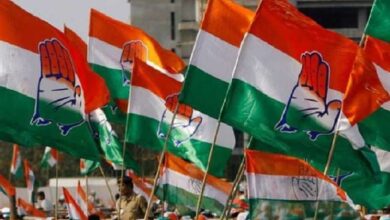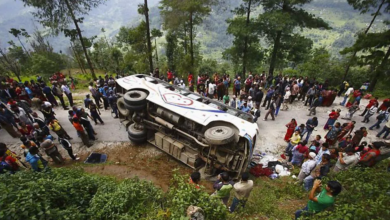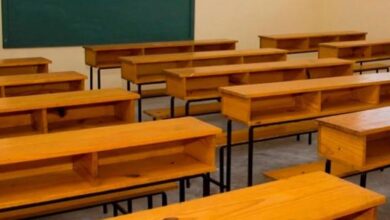Due to Mayawati’s inaction, SP and BJP are eyeing Dalit votes in UP, read the report

The Dalit vote has become very important due to Mayawati’s low activism in the Uttar Pradesh elections. The way to power in the state will be easy for whomever this vote will go, apart from the BSP.
The election fervor is at its peak in Uttar Pradesh. Political parties are making every effort to bring about caste equations. Looking at the political scenario of this time, it seems that it is not possible to get the power of UP without making caste equations. This is the reason that the Samajwadi Party recently included many BJP leaders including Swami Prasad Maurya, Dharam Singh Saini, Dara Singh Chauhan, Brijesh Prajapati in its party.
SP tried to give a message that backward society is with them. Let us tell you that the Dalit vote is very important in Uttar Pradesh and there is a Dalit vote bank of around 21% in the state. For the last 25 years, this vote has generally remained with the Bahujan Samaj Party. But after 2014 it broke down and this vote also got divided into two parts, Jatav Dalit and Non Jatav Dalit. Although a part was with Mayawati till the 2019 Lok Sabha elections and still is.
Decisive Dalit Population: Jatav Dalits constitute 55% of the total population of Dalits in UP. Whereas in the remaining 45%, Kannaujia, Kol, Pasi, Khatik, Dhobi come. After Jatav Dalits, 16% of the Dalits are Pasi and 16% Kannojia and Dhobi come. The remaining 13% of the population consists of Kol, Khatik, Dhobi, Dhanuk and others. Since the 2014 Lok Sabha elections, the BJP has made inroads into a large population of non-Jatav Dalits and this has also become a major reason for the BJP’s bumper victory in the 2014 Lok Sabha elections, 2017 assembly elections and the 2019 Lok Sabha elections.
However, it was seen in these elections that 55% of the Jatav Dalit population remained with Mayawati in the 2014 Lok Sabha elections, the 2017 Assembly elections and the 2019 Lok Sabha elections as well. For this reason, in the 2014 Lok Sabha elections, in terms of vote percentage, the BSP was second in the 2017 assembly elections, even though the BSP got less seats than the SP. At the same time, in the 2019 Lok Sabha elections also, the vote share of BSP was more than that of Samajwadi Party.
Distance of Mayawati from election: If we look at the 2022 election campaign, Mayawati has not yet started the election campaign in the same manner as before. On January 15, the day Mayawati’s birthday, she held a press conference and told the policies of her party and asked the workers to go among the people and tell about the policies of BSP. Now the big question arises that if Mayawati is not taking interest in the 2022 elections, then where will this Dalit vote go? After decades in Uttar Pradesh, it seems that elections are being held only between two parties. It seems that only Bharatiya Janata Party and Samajwadi Party are fighting the battle in the field.
BJP attracted non-Jatav Dalits to itself: After 2014, when BJP managed to attract the votes of non-Jatav Dalits. After that BJP’s stand became clear that the focus of BJP will be on non-Jatav Dalits. After this, in the schemes that the government tried to implement, special attention was also paid to the Dalits. The district level leaders of BJP were also instructed to take care of the Dalits and those who are eligible for the schemes should get its benefits. BJP also got their advantage in the elections.
In 2014 Lok Sabha elections, 2017 assembly elections and 2019 Lok Sabha elections, BJP set a new trend in UP to bring 40 percent or more votes and gain political power in the state. If we talk about 2007 and 2012, BSP and SP formed government with full majority but vote percentage remained close to 30 percent. But in the coming elections, the SP has realized that if it is to come close to power in 2022, then the vote percentage will have to be taken beyond 35%.
In view of this, the SP is trying to attract the Pasi Dalits to its side. The population of Pasi Dalits is 16 percent of the total Dalit population in the state. Inderjit Saroj, RK Choudhary and many other party leaders have also been engaged by the SP to connect the Pasi Dalits with the SP.
What is the math of reserved seats?: In the 2017 assembly elections, 86 seats were reserved. In this 84 seats are reserved for SC community while 2 seats are reserved for ST community. The BJP alliance last time won 76 reserved seats (BJP 70, Apna Dal (S) 3, Subhasp 3). On the other hand, Samajwadi Party won 7 seats, BSP 2 and an independent candidate won one seat. Overall, BJP won more than 87% of the reserved seats and formed the BJP government in the state.
At the same time 85 seats were reserved in the 2012 assembly elections in which SP won 58 seats, BSP on 15 seats, Congress on 4 seats, BJP on 3 seats, RLD 3 and Independent candidates won 2 seats. In this way, the SP had won 67% of the seats and the SP government was formed in the state.
Whereas in the 2007 assembly elections, 89 seats were reserved. In that election BSP 61, SP 13, BJP 7, Congress 5, RLD and Rashtriya Swabhiman Party 1 and an independent candidate won one seat. In 2007, the BSP won 68% of the reserved seats and a full majority BSP government was formed in the state.
,




